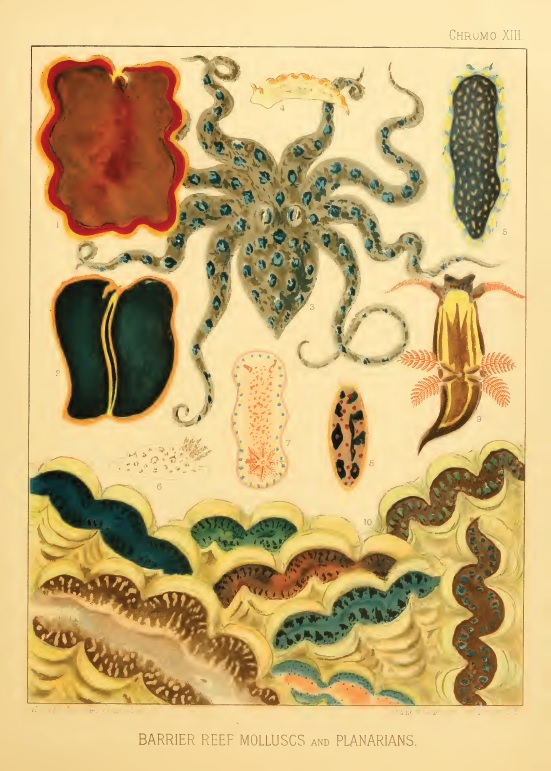Antique coral reef illustrations
In centuries past—an era absent the wonders of Google’s image search—curious naturalists were reliant on published reports for knowledge on the obscure creatures living in the far corners of the world. The scientists of this period had to have not only a keen eye for zoology, but an artistic talent to present it to the public. This resulted in such talents as John Audubon and Ernst Haeckel, whose illustrations bore such verisimilitude and detail that to this day their prints are sought after as fine works of art.
On the other end of the spectrum were artists whose works are perhaps best said to have been inspired by nature, rather than attempting to accurately depict it. Albrecht Dürer’s well-known illustration of a Rhinoceros is a good example; he had never actually seen one. Samuel Fallours, an early 18th century clergyman’s assistant living in Indonesia, created one of the earliest color catalogs of fishes. His depictions were full of psychedelic whimsies that were equal parts inspiration and exaggeration—not least of which being his depiction of a mermaid as a member of the local reef ecosystem.

The illustrations in this article come from a more recent work: “The Great Barrier Reef of Australia; Its Products and Potentialities” of 1893 by William Saville Kent. Mr. Kent led the type of fanciful life that only a 19th century British naturalist could. He was one of the original reefbuilders, working throughout the 1870s in Britain’s earliest public aquariums. He next took the job of Commissioner of Fisheries in Australia, which at the time had only been settled by England a few decades prior.

The Great Barrier Reef was hardly known back then, and one can only imagine the excitement Mr. Kent must have experienced exploring these wild reefs for the first time. It was surely challenging creating these painting, and I can only assume he had his own small aquarium with which to help with observing his subjects. Without Vortechs and Radions, the logistics of maintaining his aquarium must have been immensely difficult.
Zoological illustrations from this era hold a special appeal, as it’s not difficult to see in the artist’s finished works the wonder and excitement they must have felt. Collecting and painting a Harlequin Tuskfish in 1893 was a privilege that surely few would have experienced. A great many works like these are now in the public domain, and the Biodiversity Heritage Library is an astounding resource for browsing through these antique publications.
This guest contribution was written by Joe Rowlett










